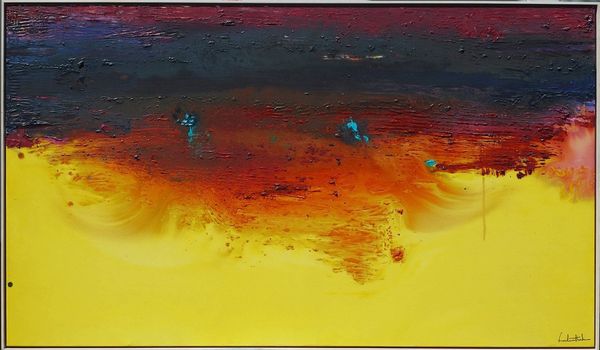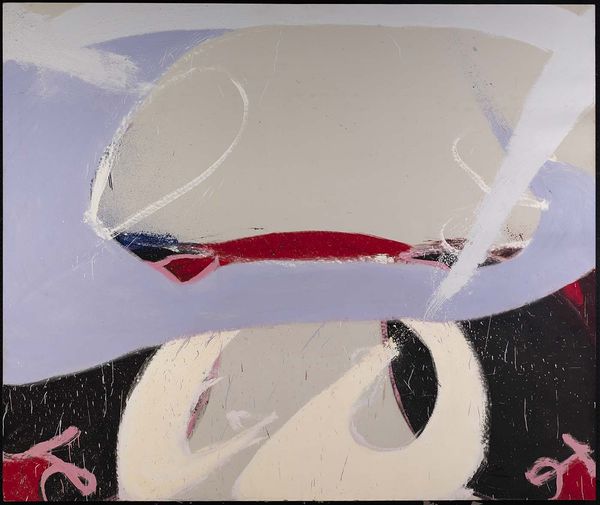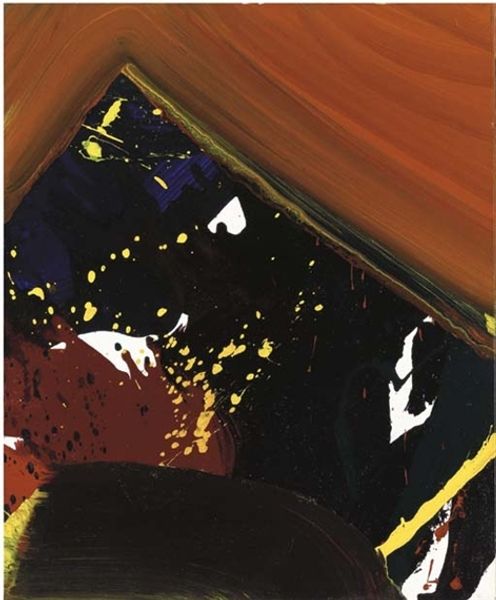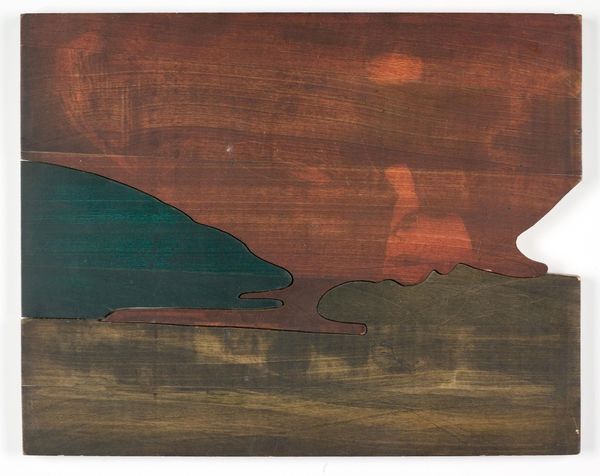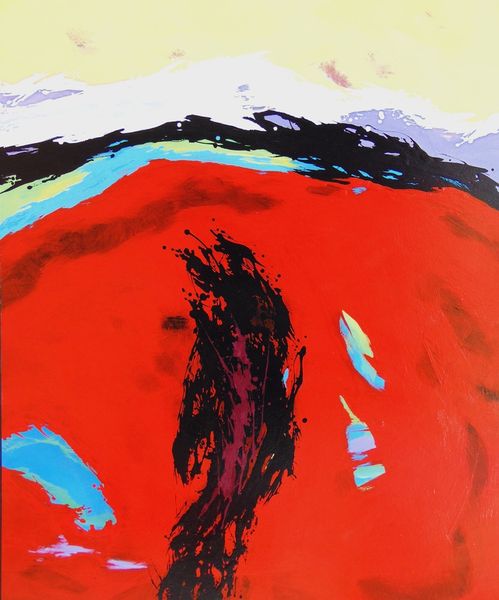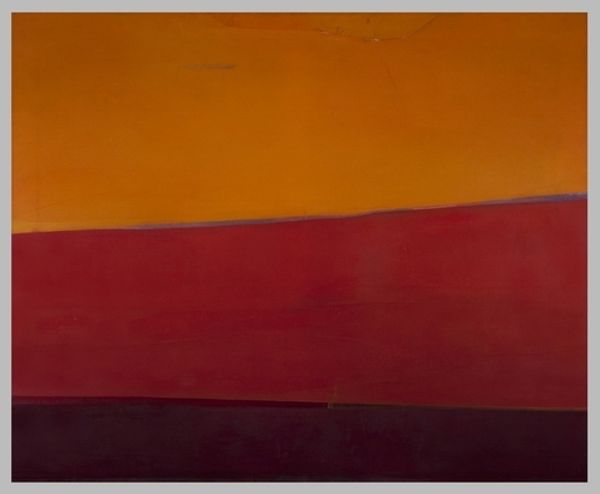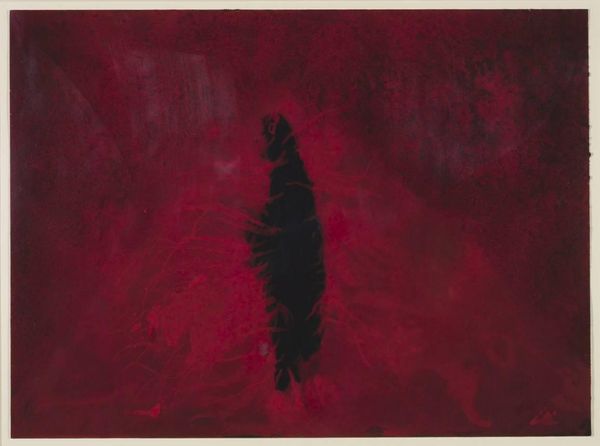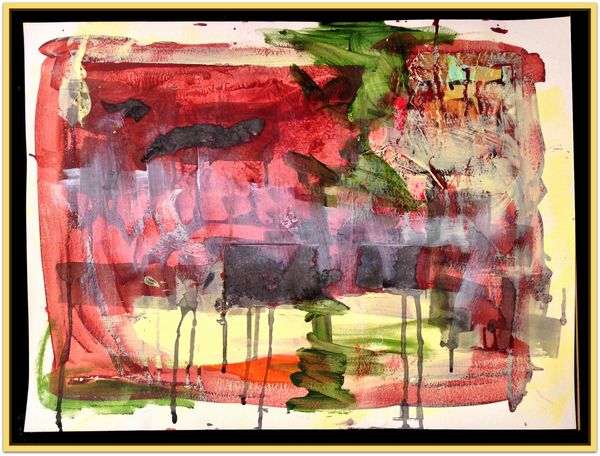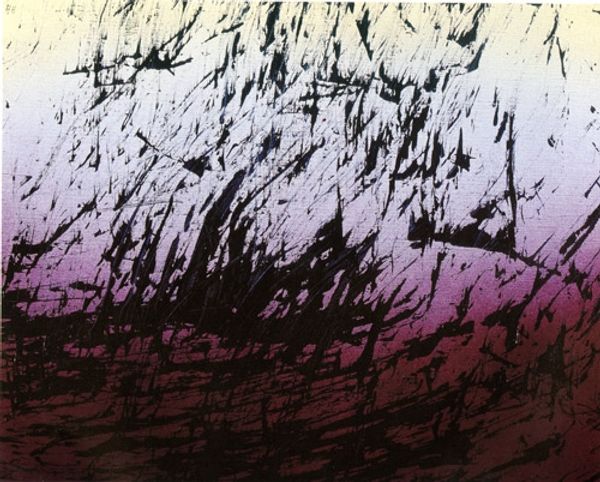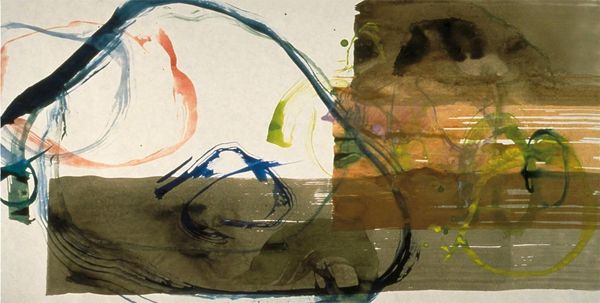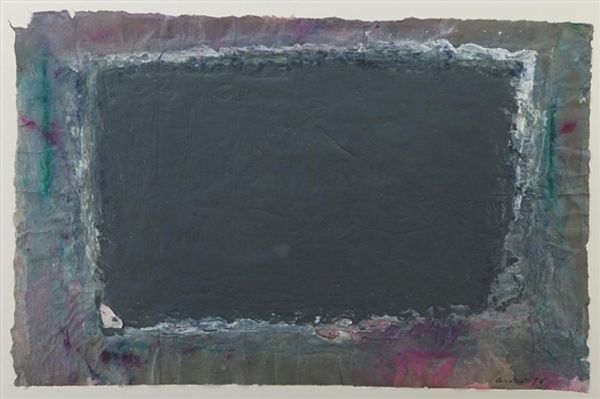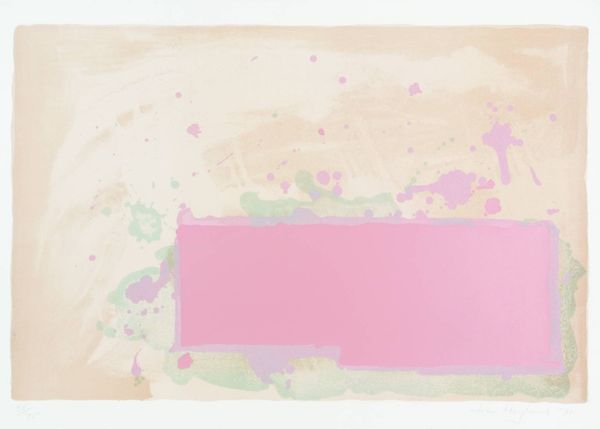
Copyright: Helen Frankenthaler,Fair Use
Curator: We're looking at Helen Frankenthaler's "Harbinger," an oil on canvas created in 1986, a mature work from her career, demonstrating her mastery of color field painting. Editor: Immediately, I sense a brooding tension. The predominantly dark and earthy tones are offset by the soft pink background. It's as if a storm is brewing, yet held at bay. Curator: The very title, "Harbinger," points to this anticipation. In 1986, amidst global sociopolitical shifts, environmental awareness began to intensify, casting a long shadow on existing power structures. How might Frankenthaler's color choices engage in those larger discourses? Editor: I agree. The application seems crucial too. The thinly applied veils of color, especially that deep burgundy pooling at the bottom, feel almost ominous. I keep thinking about the slow violence enacted on landscapes and the subtle shifts that often foretell disaster. Curator: Precisely. And that disaster isn't always external; look at how Abstract Expressionism opened up space for expressing the complexities of internal emotional landscapes as well. Given Frankenthaler's position as a woman within this movement, how can we think about this painting's relationship to issues of gender, authorship, and visibility? Editor: Good point. The painting becomes even more evocative viewed from that intersection. Are the subdued tones symbolic of repressed expression? The bright gold in the middle seems to fight against being swallowed up by all those shadows. And this painting arrives roughly at the halfway point of the AIDS crisis and after she would've begun showing more consistently internationally in gallery settings. It must've felt urgent to show the nuances that we hold when moving among our broader art world circles. Curator: I like the term ‘swallowed up,’ and how you describe the sense of something almost fighting back from it—perhaps representing a striving toward agency against the background of constraints Frankenthaler herself had faced? Editor: Thinking about the composition as resistance to external pressures—social, political, art-historical—helps clarify the title "Harbinger," as this sense of tension feels predictive. This painting then could serve as an anthem for all forms of endurance. Curator: This has broadened my interpretation of what might feel like abstract swirls of color initially into something richer in socio-political texture. Editor: Exactly, and it's important to remember how these tensions play out over time. A powerful viewing experience, made all the more relevant today as we confront even more social and environmental crises.
Comments
No comments
Be the first to comment and join the conversation on the ultimate creative platform.
